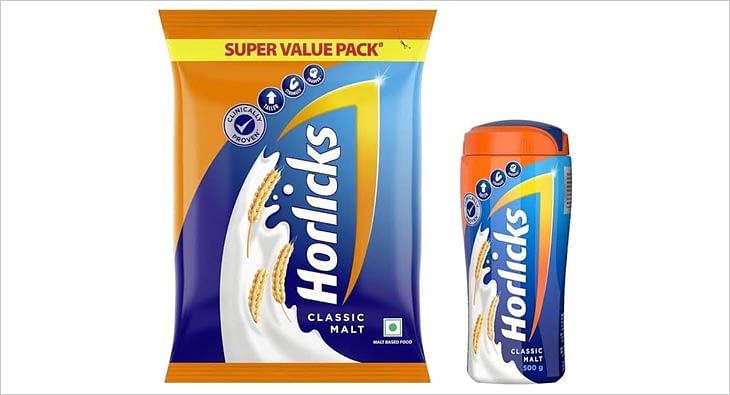Our core philosophy rests on quality, innovation & service: S Subramanian, Preethi
S. Subramanian, Managing Director, Preethi Kitchen Appliances Pvt Ltd, tells us how product innovations based on consumer insights have helped the brand connect with the consumer

Founded in 1978, Preethi Kitchen Appliances, the leader among mixer-grinder brands in South India, was acquired by Philips in 2011. Since then, Preethi Kitchen Appliances has evolved to become a brand with a strong presence in South India. Commenting on how the brand performed last year, S. Subramanian, Managing Director, Preethi Kitchen Appliances Pvt, Ltd. says, “In the last five years the CAGR has been upwards of 15 per cent. Last year was a good one, where we did close to 24 per cent in terms of overall growth in value.” Subramanian attributes this success to the innovations in the segments that Preethi operates in, expansions into new categories, good quality products and excellent service to its consumers. He adds, “We believe in ensuring that consumers get what they deserve and we try to plug in the states, innovating along the way.”
A Match Made In the Kitchen
The Philips acquisition helped Preethi primarily in the areas of technology systems and processes as the company has been drawn in synergies with the parent organisation. Says Subramanian, “As far as Phillips and Preethi go, we have understood that the Preethi brand has got its own set of strengths when it comes to understanding the consumers and the relevance it has in the Southern markets. We have kept the consumer part of the brand independent of Philips. What actually got integrated into the acquisition are the manufacturing and the R&D facilities.” He adds, “From an expansion point of view, we have kept ourselves closer to the markets that we have our strengths in, Tamil Nadu, Kerala, Karnataka, Andhra Pradesh and Telangana. We have also entered into Gujarat, Maharashtra and Orissa. Also, in terms of categories, we've tried, as much as possible, to keep the exclusivity between the two brands. And together with Philips, we are the number one kitchen appliance company in the country.” In the South, Preethi holds a market share of over 30 per cent.
Mitigating Risks
Primarily known as a mixer-grinder brand, Preethi has repositioned itself as a kitchen appliances brand. It has diversified itself into other categories to mitigate the risk of being highly dependent on a single category. Subramanian explains, “We decided to expand into the areas that we were familiar with, as far as consumers are concerned. In that journey, the only challenge was to not dilute our position as a mixer grinder brand and to continue being the number one in the category. At the same time, have judicious resources ploughed into other categories for investment and growth.”
While Preethi’s top five categories are mixer grinders, gas stoves, tabletop grinder, induction cooktops and electric rice cookers, the company’s growth has been led by the gas stove and mixer grinder category.
He says that when Preethi ventured into was the highly-penetrated gas stove category, the strength of their understanding of consumers, their insights and meaningful innovations, backed up with strong communication enabled them to create a niche for themselves in the category.
Subramanian pointed out that the consumers were looking at multi-cuisine and there was a need for smaller appliances, given the shrinkage in the kitchens, and people did not want to have multiple appliances.
Preethi innovations led to the launch of Preethi Zodiac, a mixer-grinder and food processor combined into one. When Zodiac was launched five years ago, the average price of a mixer-grinder was Rs 3,000. Today, Zodiac sells for around Rs 7,000.
He says, “The price point has been elevated and consumers are getting value as the food processor and mixer-grinder are combined into one. It's been a win-win situation for the organization and the consumer. Zodiac is the number one SKU for us in the mixer grinder category. We were able to balance our portfolio and without compromising on our number one position, innovate continuously to see consumer need states plug gaps, and grow categories apart from mixer grinder.” Subramanian says that the company’s core philosophy rests on three pillars – quality, innovation and services, which provide a winning experience to consumers.
Marketing Preethi
Preethi’s advertising expenses are pegged at 5-6 per cent of its sales with the focus on the top five categories. Says Subramanian, “We need to be present in certain key categories and geographies because we understand the consumer much better here in the South.” With the region being an insulated market, he says that investments are made in every market and a judicious mix of ATL, BTL and Digital are used. For all new product launches communications, TV and Print. Preethi experiments with Digital, from time to time, in terms of the different media formats, combinations, etc. In a category like appliances, BTL is equally important for Preethi, which helps create awareness and desire and initiates action to the final conversion on the shop floor through demonstrations and activations. “So it is a judicious mix of all three, we cannot ignore any one of them. At the same time, we have kept in mind what is it that we want to take to the audience and we've tried to use the mix accordingly,” he says.
Looking ahead on what we can expect from Preethi, Subramanian says, “For us, it's all about ensuring that we get the right product and introduce meaningful innovation for consumers. If there is a need gap that is to be plugged, we must understand what it is and ensure we give a value proposition. We have a strong innovation lined up for the existing categories and very recently we have entered chimneys as a category in Tamil Nadu”
Read more news about Marketing News, Advertising News, PR and Corporate Communication News, Digital News, People Movement News
For more updates, be socially connected with us onInstagram, LinkedIn, Twitter, Facebook, Youtube, Whatsapp & Google News
About 60% Instagram influencers in India have fake followers: Report
As per a media report, influencer marketing platform KlugKlug has found that only 2.48 million profiles out of the 8 million have ‘high-quality’ followers
Two of three Instagram influencers in India have more than 60 per cent fake followers, a report by influencer marketing platform KlugKlug shows.
This is particularly true for the beauty and fashion sector, the report noted.
Other countries that have influencers with fake followers are Brazil, the UAE and Indonesia.
As per media reports, such Instagram fake followers can be roped in for as little as Rs 10 to a high of Rs 1,000.
According to Klug Klug India, only 2.48 million profiles out of the 8 million have high-quality followers.
A number of other categories have also been buying fake followers, media reports have noted.
As per a media expert, quoted in the reports, brands are finding it difficult to identify and curb the menace of fake followers and bots.
In a recent setback for influencers the Central Consumer Protection Authority (CCPA) has said those promoting activities like gambling and betting are equally liable as the companies promoting the same.
15% consumers enhance their user experience through virtual assistants: Kantar report
According to Soumya Mohanty, Managing Director & Chief Client Officer- South Asia, Insights Division, Kantar, less than 1% of ads get tested due to lack of time
Marketing data and analytics firm Kantar has unveiled a report that studies the burgeoning AI market to dish out actionable insights for marketers. Within AI, virtual assistants are the fastest growing segment. The report noted that 15% consumers enhanced their ‘user experience through virtual assistants’. This segment is the fastest growing at 27% YoY.
According to the study, while ‘fitness’ and ‘social media’ apps are amongst the leading categories, driving AI adoption (with an average of 2.3 AI led features embedded in these applications), segments like ‘BFSI’, ‘job search’ and ‘short video’ apps are relatively slow in AI adoption, with an average of 1.2 features each. Entertainment apps, digital commerce and pharmacy apps stand somewhere in the middle with 2.0 & 1.8 AI features being adopted, respectively.
Additionally, the report said that while 90% of marketing and sales leaders think their organisations should be using AI “often”, 60% said their organisations “rarely or never” do. Speaking to exchange4media, Soumya Mohanty, Managing Director & Chief Client Officer- South Asia, Insights Division, Kantar highlighted that currently there are a lot of organisations who know that there is something called AI, but haven’t yet figured out how it could help them holistically.
“A lot of the AI just gets used for efficiency purposes, so repetitive tasks get automated,” Mohanty pointed out. Data also plays a big role in why certain organisations are struggling with how to use AI.
For instance, Mohanty explained that in segments like D2C, telecom etc. there is a lot of primary or first-party data. So being able to leverage AI also gets easier. “It's the traditional large sort of FMCG type companies where data sits in silos. You don't really have one single source of data where it's a little difficult to use the full power of AI, because the full power of AI also needs a lot of data sitting in a structure that you can use,” she added.
So, can AI help marketers have a unified view of data? No, says Mohanty. “AI does not help marketers get a unified view of data. Once you have data in a unified way, AI can help you do a lot more with that data.”
According to her, organisations today need to have good, strong data warehousing. “It needs to make sense because a lot of the silos are also because everybody owns one part of it. A lot of people have their own analytics teams internally, so there are a lot of agendas and stakeholders. And then we say data is in silos because fundamentally, when you're doing something internally, different people have different stakes in it,” Mohanty added.
Puneet Avasthi, Senior Executive Director, South Asia, Insights Division, Kantar shared that most organisations are now heavily investing in creating first-party data sets. “Companies that have first party data about their consumers and transactions or interactions that they have with the brand are going to be able to leverage that more effectively to create sharper profiles for the brand as such for the consumer and build relevant recommendations at the right moments.
Panning out she also highlighted how AI can be leveraged to enhance market research and make it more accessible, a part of which Kantar is itself involved in. “A lot of times people say that we can't test an ad because we don't have time. So less than 1% of advertising gets tested and just gets put out. Does it work when it gets put out? It is the question the audience should answer, because so many times, it backfires,” Mohanty shared. Apparently, digital particularly doesn't get tested because organisations just do a/b testing and leave it at that.
Speaking of preferred use cases of AI, Avasthi added that various businesses and brands are looking at creating an experience for the brand that is in line with the brand's architecture and progress across all touch points. “That is something that the AI engines that are working behind can ensure, that all such interactions are consistently delivered across different virtual assistants or chatbots that are available to the consumer,” he said.
The other use case, according to Avasthi, is ensuring that there is greater visibility for the brand in the digital sphere as such, through various recommendation engines, when a certain need is being looked for and to throw up the right kind of information about the brand so that the brand message is amplified in the mind of the consumers.
Among other insights from the Kantar AI report is that 88% consumers used AI based algorithms which analysed their preferences, behaviours, and interests to create personalised recommendations for tailored experiences. This segment grew at 6 % YoY. At 21%, ‘smart home automation’ is a smaller segment but growing at 25% YoY.












 Share
Share
